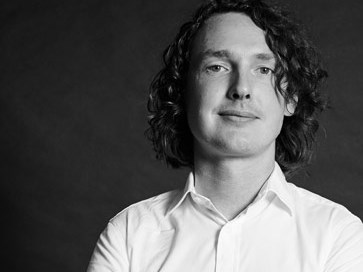
-
26 June 2017
Rory Martin, the sustainability manager for residential at Frasers Property Australia, will be one of our judges for this year’s Sustainability Awards.
Martin is responsible for the sustainability agenda of Frasers Property Australia’s residential portfolio. His background in sustainable architecture is extensive: Martin holds both a Bachelor of Architecture (Honours) and a Masters of Science in Environmental Design. He is also a registered architect and a Green Star-accredited professional.
In the lead-up to the 2017 Sustainability Awards, Martin spoke to A&D about why he wants evidence of sustainability performance from nominations, why the residential sector is a pressing issue for the industry, and why it’s important to reduce the perception of sustainability as an “add-on”.
What are you looking for as a judge?
As Cuba Gooding Jnr’s character said in Jerry Maguire, “Show me the money” – or more accurately, don’t just tell us it’s sustainable, show us! I’m hoping this year we will see more performance demonstration. Initiatives such as client feedback, thermal/blower door results, and actual energy readings all demonstrate that a building is delivering on its promise. As an industry, it’s critical that we not only design for sustainability, but that we deliver it also.
How much do you think sustainable design has changed in recent years?
Over the past couple of years, the emergence of the social aspects of sustainability in particular has been a bit of a game changer. As we know, true sustainability is based on delivering effective social, economic and environmental outcomes, but the emergence of the social aspects has allowed architecture in particular to re-engage in the sustainability conversation at a deeper level. This conversation has naturally expanded to health and wellbeing which, as something that is very real to building occupants and residents, has become a genuine focus within sustainability. Again, this is a fantastic opportunity for architecture and design to lead the conversation.
What do you think is the most pressing sustainability issue for the industry at the moment?
The residential sector. The residential sector accounts for approximately 50 percent of the carbon emissions of our industry, yet we have been predominantly focused on institutional and commercial buildings and successfully lifting their performance. If we are to tackle the impact of the residential sector in the industry, then it’s going to take not just a few of us leading the way. It will take a concerted industry effort from large volume builder’s right through to one-off project home architects, designers and builders to create change. There’s no silver bullet for this one, so it’s going take a number of efforts including raising building standards, introducing performance metrics and integrating sustainability deeper within our industry, trade and academic education courses to drive the necessary change.
What is a new technology or approach that you hope gains wider use?
While we’re committed to the “Everest of sustainability” with the Living Building Challenge at Frasers Property Australia, I doubt it’s something that is going to be mainstream anytime soon – though I’d gladly be wrong on this! What I would love to see gaining wider use – and I believe [it] is – is the passive house approach. A greater focus on the passive design aspects of our buildings, and in particular our homes, will ultimately deliver more widespread benefits to occupants.
This fabric-first approach [of] “building tight, ventilate right” lends itself to reduced energy needs and therefore reduced bills, while it can also help create healthier and more comfortable homes and workplaces. While this approach is nothing new, I think we’ve become somewhat disconnected as an industry in Australia from understanding the relationship between the quality of the building fabric and its impacts on our pockets and comfort.
Do you think sustainability is still an add-on or is it incorporated holistically?
In general, I think the response to this question fundamentally depends on who you ask. Unfortunately, I think a large part of the industry still sees it as being separate or an “add-on”. If we didn’t then we wouldn’t have ESD consultants, sustainability managers or even the Sustainability Awards!
My utopian vision would be that these professions and categories would not exist in future, as holistic sustainability would simply be an element of “good design” and “smart operations”.
I do believe that getting sustainability introduced earlier and earlier into projects is key to breaking this barrier down. At Frasers Property, we integrate sustainability as part of our acquisitions strategies. [This means that] when projects commence, our development teams are clear on the targets and goals that have been set. Accordingly, as we continue to better integrate sustainability into our developments, we help [to] eliminate its traditional “add-on” perception.
Where do you see sustainable design heading in the next few years?
I think there are a [few] things that continue to evolve, [and] that will empower greater sustainability outcomes in design.
Firstly, the digital tools that designers have access to – not just in BIM, but with parametric modelling capabilities such as Ladybug and Honeybee, designers [are able] to test design solutions with greater levels of sophistication, therefore producing more sustainable outcomes.
Secondly, while we may lack leadership at a federal level on sustainability initiatives, I believe that we will see increased performance requirements legislated. My hope is that this will lead to designers not only taking a fabric-first approach, but will also get involved in performance testing so that they may better understand the impacts of their design decisions on a building’s actual performance.
Finally, while I feel that many in the industry still see sustainability as an “add-on”, I believe this is changing. The really savvy designers are recognising the opportunity that lies in integrating sustainability as part of a projects concept, for the client’s benefit, in the form of healthier, more comfortable and energy-efficient buildings.
